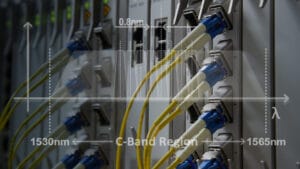
A Guest Blog from CEO, John Jutila
每年5月16日,全球社区都会庆祝《国际光线》,这是一项联合国教科文组织倡议,庆祝光在科学,文化和艺术,教育以及其他地区的作用。为了纪念这次,我们的首席执行官约翰·朱迪拉(John Jutila)对量子力学的历史和现状进行了一些思考。
Quantum Leaps and Boundaries
一百年前,即1919年5月,英国天体物理学家亚瑟·埃丁顿(Arthur Eddington)和他的探险队降落在非洲西海岸偏远岛屿的普里尼奇(Príncipe)上,以测量日食期间的光线。他着手证明阿尔伯特·爱因斯坦(Albert Einstein)的假设是,遥远的恒星的光将根据他的一般相对论弯曲(在这种情况下,由于太阳的重力场而弯曲1.75弧秒),其中重力扭曲了时空。
This proof made Einstein famous, and the scientific community began exploring Einstein’s novel theories in earnest. The discourse over the next twenty years ushered in a new field ofquantum mechanics。量子力学描述了我们的世界在亚原子层面的行为,在那里不适用牛顿物理学(考虑台球碰撞)的地方。
The odd thing is that, while we can now describe quantum rules with great accuracy, we do not yet understand or comprehend them – they are mathematical constructs with no reference frame in our own physical experience. At the level of subatomic particles, the quantum world is strange. Particles exist in quasi-states as both particles and waves; probability functions describe their positions in space (Schrödinger Wave Equations). We lack the ability to know both the position and momentum of a particle simultaneously with accuracy (Heisenberg Uncertainty Principle). Instantaneous interactions occur between two particles located far apart (Particle Entanglement). Particles appear to pass through two separate narrow slit openings simultaneously (based on Wave Particle Duality) – as if in two places at the same time.
My father once told me that when you cannot understand why something happened, “it may be driven by hidden politics.” Indeed, some theorists suggest that there are hidden variables at play that are driven by “agents” that we have not yet discovered. Newtonian holdouts suggest that we do not understand quantum mechanics simply because we have not yet found the right “hidden variable” or reference models that we can understand – it is only a matter of time.
Despite the advances in quantum science, theorists are still unable to explain the forces of gravity, a big hole in the integrated “standard model” of particle physics which attempts to explain all subatomic forces. The current assumptions required to make quantum theory work well with electromagnetism and strong and weak forces must be changed to accommodate gravity (via a ‘Graviton’ particle). This renders the base theory potentially incorrect. It may be difficult to understand how to accommodate new interactions when dealing with pure mathematical constructs that we do not fully understand.
Moreover, some trickery has been involved in making the quantum functions work properly to render them mathematically pliable. For example, ‘renormalization’ is used in Quantum Electrodynamics (QED) to deal with infinite integrals. Perhaps some of the theoretical assumptions we have made thus far to make the math work are incorrect.
For the time being, quantum theory is working well and leading to new discoveries in fields such as cryptography, quantum computing, optical sensing, high-resolution quantum dot displays, and optical communication. The resulting new products and solutions will continue to revolutionize our world – but you will generally not need to understand how or why they work. Unless, of course, you are mathematically inclined, and prefer to discuss topics such as the Hilbert Space, the Klein-Gordon equation, or Poincaré symmetry at your dinner parties.

